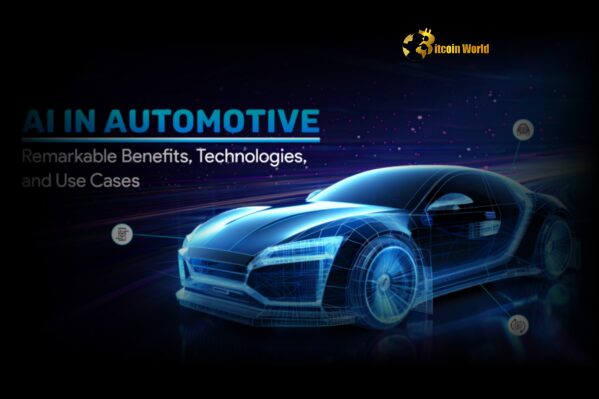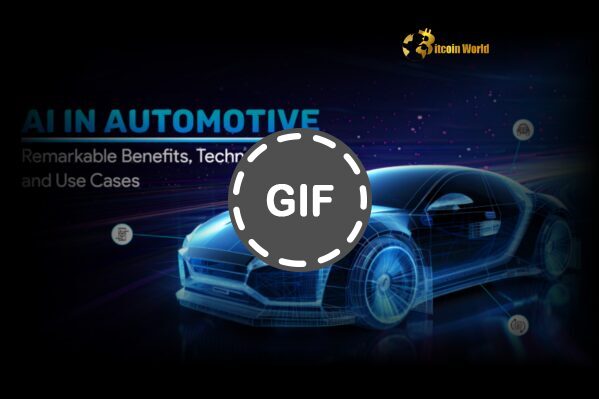BitcoinWorld

Unlocking Success: AI in Automotive Solves Real Business Problems
In a world increasingly shaped by technological disruption, where blockchain and decentralized finance are redefining financial systems, traditional industries are also undergoing quiet revolutions. One such transformation is happening in the automotive sector, specifically concerning how companies like Toyota are embracing artificial intelligence. While many brands talk about AI concepts, bringing these ideas into practical, large-scale production to solve significant business problems remains a challenge. This is where the collaboration between NLX and Toyota offers valuable lessons, providing actionable insights on moving AI from prototype to powerful enterprise tool.
The Challenge of AI Implementation in Large Enterprises
Implementing AI within a vast organization like Toyota is far more complex than building a simple demo. It involves navigating layers of bureaucracy, integrating with legacy systems, and ensuring widespread adoption by employees. NLX co-founder and CEO Andrei Papancea and Kordel France, principal AI engineer at Toyota, shared their experiences on this journey. They highlighted that technical prowess is only one piece of the puzzle. The human and organizational elements are equally critical.
Key hurdles in the AI implementation process often include:
- Securing executive buy-in and maintaining support throughout the project lifecycle.
- Integrating new AI technologies with existing, often complex, IT infrastructure.
- Managing change within the workforce, ensuring employees are trained and comfortable using new AI tools.
- Defining clear, measurable objectives for AI projects to demonstrate tangible value.
Solving Business Problems with AI: A Practical Approach
Toyota and NLX focused on using AI not for futuristic concepts, but for addressing immediate, pressing business needs within their car repair and service operations. This practical approach is key to demonstrating return on investment and gaining organizational momentum. Instead of broadly applying AI, they targeted specific pain points where AI could provide clear efficiency gains or improve customer experience.
Examples of solving business problems with AI in this context could include:
- Predictive maintenance: Using AI to analyze vehicle data and predict potential failures before they occur, optimizing service schedules.
- Automated diagnostics: Developing AI systems to assist technicians in quickly identifying complex issues based on vehicle symptoms and historical data.
- Optimizing parts inventory: Using AI to forecast demand for specific parts, reducing waste and ensuring availability.
- Enhancing customer communication: Implementing AI-powered chatbots or virtual assistants to handle routine inquiries about service appointments or repair status.
By focusing on these concrete applications, Toyota and NLX could clearly articulate the value proposition to stakeholders.
Insights from Toyota AI Initiatives
Toyota’s exploration of AI is not new, but their collaboration with NLX highlights a shift towards operationalizing these technologies. The insights shared emphasize the importance of starting small, demonstrating success, and then scaling proven solutions. Kordel France from Toyota likely elaborated on how their engineering teams worked closely with NLX to tailor AI models to the specific nuances of vehicle diagnostics and repair workflows.
Lessons learned from Toyota AI projects often involve:
- Cross-functional collaboration between AI experts, engineers, and frontline service staff.
- Iterative development, starting with pilot programs in limited locations before wider rollout.
- Focusing on data quality and accessibility, which are foundational for effective AI.
- Measuring impact rigorously to quantify benefits like reduced repair times or increased accuracy.
These initiatives underscore that successful Toyota AI deployments are as much about process and people as they are about technology.
Navigating the Path to Enterprise AI Success
The journey from an AI idea to a fully integrated Enterprise AI solution is fraught with challenges. NLX, as a technology partner, likely brought expertise in building scalable AI platforms, while Toyota provided the domain knowledge and the real-world testing ground. Their shared experience underscores that successful Enterprise AI requires a partnership approach.
Key elements for navigating the path to Enterprise AI success:
| Phase | Key Considerations |
|---|---|
| Concept & Planning | Identify specific business problems; secure executive sponsorship; define success metrics. |
| Development & Piloting | Build minimum viable product; ensure data readiness; test in controlled environment; gather user feedback. |
| Integration & Scaling | Integrate with existing systems; develop training programs; plan for infrastructure needs; monitor performance. |
| Change Management & Adoption | Communicate value to users; provide ongoing support; address resistance; celebrate successes. |
This structured approach helps large organizations manage the complexity inherent in deploying AI at scale.
The Future of AI in Automotive Service
The work done by companies like Toyota and NLX in areas like repair and maintenance is just the beginning of leveraging AI in automotive. As vehicles become more connected and complex, the role of AI in diagnosing, maintaining, and even repairing them autonomously will grow. This not only impacts service centers but also influences vehicle design and manufacturing processes.
The broader implications of AI in automotive include:
- Improved vehicle reliability and safety through predictive analytics.
- More efficient and cost-effective service operations.
- Enhanced customer satisfaction due to faster and more accurate repairs.
- Potential for new business models based on AI-driven services.
The practical steps taken today are paving the way for a future where AI is deeply embedded in every aspect of the automotive lifecycle.
Conclusion
The collaboration between Toyota and NLX provides a compelling case study on successfully implementing AI to solve real-world business problems. Their experience highlights that moving AI from the lab to large-scale production requires a holistic approach, addressing not just the technology but also executive buy-in, integration challenges, and change management. By focusing on tangible outcomes and adopting a structured implementation strategy, enterprises can unlock the significant potential of AI, driving efficiency, improving operations, and enhancing customer experiences, proving that practical AI is not just possible, but is already delivering powerful results in traditional industries.
To learn more about the latest AI market trends, explore our article on key developments shaping AI features.
This post Unlocking Success: AI in Automotive Solves Real Business Problems first appeared on BitcoinWorld and is written by Editorial Team





